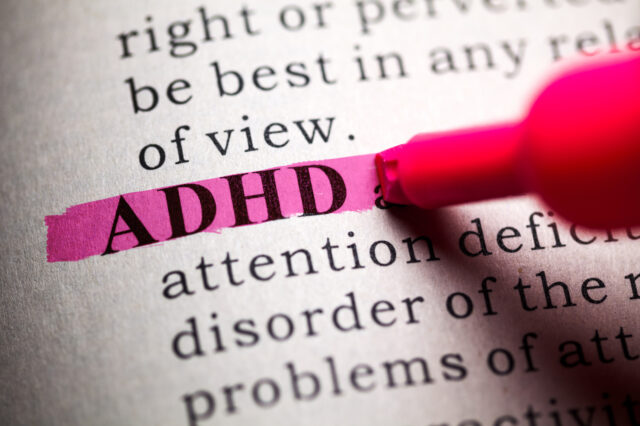Vehicle Heat Safety for Children
Unfortunately, child deaths and heat-related illness, like dying from heatstroke in a hot car, increase during summer. Since 1998, more than 950 children have…

Update your location to show providers, locations, and services closest to you.
Attention deficit hyperactivity disorder (ADHD) is a problem caused by the presence of one or more of these findings:
ADD; ADHD; Childhood hyperkinesis
ADHD often begins in childhood. But it may continue into the adult years. ADHD is diagnosed more often in boys than in girls.
It is not clear what causes ADHD. It may be linked to genes and home or social factors. Experts have found that the brains of children with ADHD are different from those of children without ADHD. Brain chemicals are also different.
ADHD symptoms fall into three groups:
Some people with ADHD have mainly inattentive symptoms. Some have mainly hyperactive and impulsive symptoms. Others have a combination of these behaviors.
INATTENTIVE SYMPTOMS
HYPERACTIVITY SYMPTOMS
IMPULSIVITY SYMPTOMS
Many of the above findings are present in children as they grow. For these problems to be diagnosed as ADHD, they must be out of the normal range for a person's age and development.
There is no test that can diagnose ADHD. Diagnosis is based on a pattern of the symptoms listed above. When a child is suspected to have ADHD, parents and teachers are often involved during the evaluation.
Most children with ADHD have at least one other developmental or mental health problem. This may be a mood, anxiety, or substance use disorder. Or, it may be a learning problem or a tic disorder.
Treating ADHD is a partnership between the health care provider and the person with ADHD. If it's a child, parents and often teachers are involved. For treatment to work, it is important to:
If treatment does not seem to work, the provider will likely:
MEDICINES
Medicine combined with behavioral treatment often works best. Different ADHD medicines can be used alone or combined with each other. The provider will decide which medicine is right, based on the person's symptoms and needs.
Psychostimulants (also known as stimulants) are the most commonly used medicines. Although these drugs are called stimulants, they actually have a calming effect on people with ADHD.
Follow the provider's instructions about how to take ADHD medicine. The provider needs to monitor if the medicine is working and if there are any problems with it. So, be sure to keep all appointments with the provider.
Some ADHD medicines have side effects. If the person has side effects, contact the provider right away. The dosage or medicine itself may need to be changed.
THERAPY
A common type of ADHD therapy is called behavioral therapy. It teaches children and parents healthy behaviors and how to manage disruptive behaviors. For mild ADHD, behavioral therapy alone (without medicine) may be effective.
Other tips to help a child with ADHD include:
There is little proof that alternative treatments for ADHD such as herbs, supplements, and chiropractic are helpful.
You can find help and support in dealing with ADHD at:
ADHD is a long-term condition. ADHD may lead to:
One third to one half of children with ADHD have symptoms of inattention or hyperactivity-impulsivity as adults. Adults with ADHD are often able to control behavior and mask problems.
Contact the provider if you or your child's teachers suspect ADHD. You should also tell the provider about:
American Psychiatric Association website. Attention-deficit/hyperactivity disorder. In: American Psychiatric Association. Diagnostic and Statistical Manual of Mental Disorders. 5th ed. Arlington, VA: American Psychiatric Publishing. 2013:59-66.
Prince JB, Wilens TE, Spencer TJ, Biederman J. Pharmacotherapy of attention-deficit/hyperactivity disorder across the lifespan. In: Stern TA, Fava M, Wilens TE, Rosenbaum JF, eds. Massachusetts General Hospital Comprehensive Clinical Psychiatry. 2nd ed. Philadelphia, PA: Elsevier; 2016:chap 49.
Urion DK. Attention-deficit/hyperactivity disorder. In: Kliegman RM, St. Geme JW, Blum NJ, Shah SS, Tasker RC, Wilson KM, eds. Nelson Textbook of Pediatrics. 21st ed. Philadelphia, PA: Elsevier; 2020:chap 49.
Wolraich ML, Hagan JF Jr, Allan C, et al. Clinical practice guideline for the diagnosis, evaluation, and treatment of attention-deficit/hyperactivity disorder in children and adolescents [published correction appears in Pediatrics. 2020 Mar;145(3):]. Pediatrics. 2019;144(4):e20192528. PMID: 31570648 pubmed.ncbi.nlm.nih.gov/31570648/.
Our community and patient programs provide great value to patients, families and loved ones. People can find support, educational materials, expert consultants and more. In most instances, these programs are offered free of charge.
Provides a range of services: diagnostic evaluation and consultation for children and youth who have complex medical, educational, emotional and/or behavioral problems.
Unfortunately, child deaths and heat-related illness, like dying from heatstroke in a hot car, increase during summer. Since 1998, more than 950 children have…

I remember when I first arrived at the University of Florida for my freshman year, I was worried that the workload would be overwhelming as compared to high…
